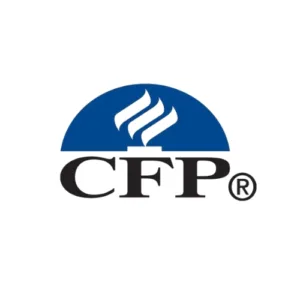The Effectiveness of the CFP Designation in Establishing Trust and Expertise
The CFP designation plays a crucial role in establishing trust and expertise within the financial planning industry. By obtaining this certification, professionals demonstrate their commitment to high ethical standards, extensive financial knowledge, and ongoing education.
Being a certified financial planner (CFP) brings numerous benefits, such as enhanced credibility, increased client trust, and a competitive edge in the market. Clients are more likely to trust advisors who hold the CFP designation due to the rigorous requirements and ethical standards associated with it.
The importance of the CFP designation cannot be understated, as it signifies a higher level of expertise and professionalism in the field of financial planning. It serves as a symbol of excellence and dedication to providing clients with quality financial advice and services.
Best Practices: Using the CFP Designation with Your Name Professionally
When using the Certified Financial Planner (CFP) designation with your name professionally, it is essential to follow best practices to enhance your credibility and professionalism. Adding CFP after your name signifies that you have met rigorous standards and ethical requirements in the field of financial planning.
By incorporating CFP into your professional title, you demonstrate to clients and colleagues that you are committed to upholding high standards of competence and integrity in financial services. It is important to ensure that you use the CFP designation accurately and in compliance with the guidelines set forth by the Certified Financial Planner Board of Standards.
Properly utilizing the CFP designation can help establish trust with clients and differentiate yourself as a qualified and knowledgeable financial planner. It is recommended to include CFP prominently in your professional materials, such as business cards, email signatures, and marketing materials, to highlight your expertise in financial planning.
Understanding the Proper Use of CFP Marks in India
Introduction to CFP Marks
The CFP®, CERTIFIED FINANCIAL PLANNER®, and associated marks (collectively referred to as “CFP Marks”) play a crucial role in maintaining the integrity and legal status of the financial planning profession. In this blog, we will delve into the essential guidelines for the proper usage of these marks in India, as outlined by the Financial Planning Standards Board Ltd. (FPSB Ltd.).
General Guidelines for CFP Professionals
Respecting Ownership and Validity
CFP professionals in India must recognize and agree that FPSB Ltd. holds the sole, absolute, and exclusive rights to the CFP Marks. This includes acknowledging that FPSB Ltd. is the rightful owner of these marks outside the United States and agreeing not to challenge their validity.
Usage and Promotion Conduct
CFP professionals are expected to refrain from adopting, using, or promoting any mark that closely resembles the CFP Marks. Additionally, they should avoid any actions that might weaken FPSB Ltd.’s rights or misuse the CFP Marks.
Representation and Business Usage
It is imperative to use the CFP Marks truthfully to represent an individual’s certified status. These marks must not be incorporated into the name of a business or company.
Detailed Usage of CFP Mark
Typography and Symbols
When writing the abbreviation ‘CFP’, always use capital letters without periods. The appropriate trademark symbol “®” should always accompany it.
Contextual Use
The CFP Mark should be used as a descriptive adjective, not as a noun or verb. It’s appropriate to use it following your name, such as in a signature block. Additionally, the mark should be paired with certification, credential, designation, exam/examination, mark, practitioner, and professional. However, this rule is exempted when the mark is used following your name.
Prohibitions in Usage
The CFP mark should never be used in a plural or possessive form. For instance, avoid using terms like “CFPs”.
Example of Correct Usage
An appropriate way to use the mark would be: “Raj Patel is a CFP® professional” or “Nishi Gupta, CFP®”.
Guidelines for CERTIFIED FINANCIAL PLANNER Mark
Distinct Typography and Symbols
Always capitalize the entire phrase “CERTIFIED FINANCIAL PLANNER” or use a mix of large and small capital letters to set the mark apart from the surrounding text. The trademark symbol “®” should always be included.
Usage Context
Like the CFP mark, the CERTIFIED FINANCIAL PLANNER mark must be used as a descriptive adjective and paired with one of the approved nouns by FPSB Ltd. It should also be directly associated with the individual certified by FPSB Ltd.
Prohibited Uses
Never use the CERTIFIED FINANCIAL PLANNER mark in a plural or possessive form, such as “Certified Financial Planning”.
Correct Usage Example
A proper application of this mark would be: “Raj Patel is a CERTIFIED FINANCIAL PLANNER® professional” or “Nishi Gupta and Raj Patel are CERTIFIED FINANCIAL PLANNER® practitioners.”
CFP Logo Mark Usage Guidelines
Logo Integrity
The CFP logo, which includes the flame, “CFP” text, and the trademark symbol, must be used as a single unit. Use only the original artwork provided by FPSB Ltd. and maintain a minimum reproduction size for clear visibility.
Association and Modification
The logo should be associated with individuals certified by FPSB Ltd. and must never be altered or modified.
Example of Correct Logo Use
A correct application would be simply displaying the logo next to the certified individual’s name, such as “Raj Patel.”
FPSB Ltd.’s Trademark Tagline
When using the CFP Marks on websites or promotional materials, include the following tagline: “Financial Planning Standards Board Ltd. (FPSB Ltd.) owns the CFP®, CERTIFIED FINANCIAL PLANNER® marks outside the United States, including in India, and permits qualified individuals to use these marks to indicate compliance with FPSB Ltd.’s certification requirements.”
Usage in Social and Electronic Media
Domain and Social Media Restrictions
The CFP Marks should not be part of your domain name, website URL, email address, or social media handle. However, displaying your CFP certification within your social media profile is permitted.
Hyperlink Guidelines
The marks may be used as website hyperlinks only if they link directly to FPSB Ltd.’s website.
For further inquiries or assistance about FPSB Ltd.’s trademark usage guidelines, especially for social media platforms, obtaining the CFP Logo Mark, or reviewing websites and promotional materials featuring the CFP Marks, contact FPSB Ltd
This comprehensive guide aims to help CFP professionals in India use the CFP Marks correctly, ensuring the integrity and recognition of the certification remains intact. By adhering to these guidelines, professionals can effectively communicate their qualifications while respecting the legal and ethical standards set by FPSB Ltd.
The Future of Financial Planning: Leveraging the Power of the CFP Designation for Career Growth and Sucess
The Certified Financial Planner (CFP) designation holds significant promise for professionals in the financial planning industry seeking career growth and success. As the demand for skilled financial planners continues to rise, holding a CFP designation can open up various growth opportunities and avenues for career advancement.
Financial planners with a CFP designation often stand out in the competitive job market due to their comprehensive knowledge, expertise, and commitment to high ethical standards. Employers and clients alike value the rigorous training and continuing education required to maintain this prestigious certification.
By leveraging the power of the CFP designation, professionals can position themselves for greater success in their careers, access higher-paying roles, expand their client base, and enhance their credibility within the industry. Embracing this credential can serve as a strategic investment in one’s future as a financial planning professional.




